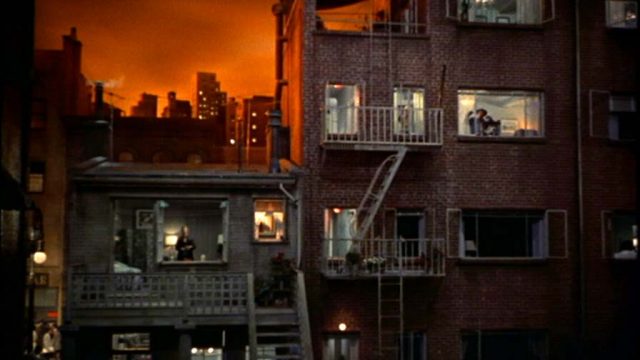We tend to think of memes as ephemeral. Keyboard Cat, 30-50 Feral Hogs, the History Channel “Aliens” guy, the bunker scene from Downfall, all repeatable and malleable ideas that are seized by the cultural consciousness and wrung dry before being tossed aside for the new thing. Yet, we’re wrong, because memes are essentially ideas and, as Alan Moore proffered in V for Vendetta, you can’t kill an idea. The specifics change, but most memes are built on an enduring template. (What is the American Chopper argument but the newest variation of the Socratic Method) One of the most persistent memes is that progress causes alienation and isolation; kids today don’t talk to the people next to them because they’re glued to their smartphones. Global connection disconnects us from the local. Of course, there’s nothing especially wrong with the kids today, because you can find this argument made all throughout history, all the way back to fretting about the very existence of the printed word. (Socrates, of course, argued that writing things down would cause great forgetfulness, because I like to bring my asides full-circle)
Alfred Hitchcock’s Rear Window is another variation on this meme, examining the way we literally live on top of each other without knowing anything about our neighbors. With the exception of one sequence every shot in Rear Window originates from the apartment of L.B. Jefferies (Jimmy Stewart), where he is immobilized in a wheelchair after a photography accident results in a broken leg. Bored out of his mind, Jefferies picks up a pair of binoculars and starts watching his neighbors, quickly becoming very engrossed in the stories of their lives and giving the various residents nicknames. For all of the movie’s great qualities, the way Hitchcock juggles all of these silent characters and subplots is one of its greatest. Everyone gets a unique storyline with a full three act structure, even if it’s as simple as the Newlyweds downshifting from the honeymoon period to a more even-keeled future. (On a technical note, the directing of these apartment sequences is fascinating. According to Ziggy, all the residents had ear pieces, and Hitchcock would tell them what to do over the radio)
In following one of these apartments Jefferies believes he’s witnessed a man murder his wife, and that’s when the movie digs into the particulars of how this perceived isolation occurs. For the most part of it boils down to risk vs. reward: if Jefferies is right then he is responsible for spotting and getting rid of a serious threat. If he’s wrong, then he looks foolish and might be ostracized. Or worse: he’s right and it makes him a target. (Which, of course, is what happens) For as social as people can be, we’re still ultimately ruled by a sense of self-preservation, which often means shying away from standing out, or even paying too much attention to what other people are doing.
Yet the film also shows how important that connectivity is, especially in the novel ways created by progress. There is a lot of peril in Jefferies’ parasocial relationship with his neighbors, and his amateur investigation into the murder, but it also leads him to save the life of Miss Lonelyhearts. Helping someone across a courtyard isn’t so different from helping someone across the country. The bubble of immediacy is its own risk and reward – you can be with the person next to you, even if it’s someone across the country who really needs your help.

